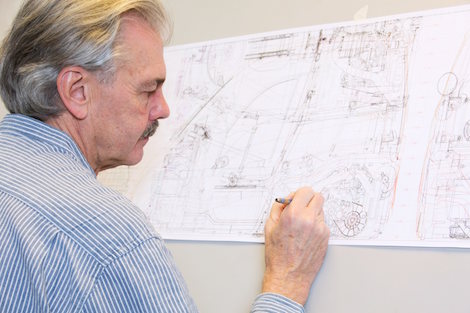Engineers are a pretty clever bunch really. They do a lot too. If you think about it, you'll find it pretty much impossible to get through your day without coming into contact with something that an engineer has made happen.
In the world of cars engineers have really upped their collective game over the last couple of decades. From safety to dynamics engineers have been doing some really smart things.
There are cars that can barrel around race tracks by themselves, there are cars capable of frankly incredible mileage and fuel consumption, some are made from the most exotic blends of materials and metals and, although perhaps not as glamorous, there are cars that are now so much safer that literally thousands of people around the world survive accidents with little or no injury. All thanks to engineers.
If I think back to when I was a kid growing up I never really thought that one day I would be able to drive a 'regular' car powered by nothing but electricity. Nor did I think that I would drive a car powered by a hydrogen fuel cell in which only water vapour came out of the exhaust. And I certainly didn't think I'd drive a car with flip up doors. FLIP UP DOORS!!! But engineers have made all of this possible.
One of my all-time favourite cars - the Bugatti Veyron - is perhaps one of the most impressive examples of pushing the engineering envelope in the automotive world.
By now you've all heard the mind-boggling array of numbers relating to that car. Yet some 20 years previously - a long time in the fast-evolving world of automotive technology - a different group of engineers created the McLaren F1, a car that is still not rivalled nor beaten by many pretenders to the throne. For a car to be capable of 372km/h today is still hugely impressive; 20 years ago it was frankly insane. Yet engineers did it.
Performance cars like the Ferrari 458 Speciale only have such incredible and useable levels of performance thanks to some highly advanced electronics and engineering that allows for rapid gear changes, smooth power delivery and on-road (and track) agility. All of which makes for a car worthy of the name "Speciale".
But there is another side to engineering that is less glamorous, and far away from the superstars like Gordon Murray, there are teams of nameless engineers working away on things like reducing the noise created by air ventilation systems and making your electric window move up and down more smoothly and efficiently.
Nowadays cars also require more electronics engineers to develop advanced safety and assistance systems. Adaptive cruise control is one of the best systems to be developed in recent memory and it is something I always use when I test a car equipped with it.
As you can read elsewhere on the site, BMW's new 7 Series will be capable of some degree of autonomous driving and can also park itself without the driver needing to be in the car. There is an argument that this, and most other parking systems, are only used a handful of times and usually to show off to friends and colleagues. I know that I never use automated parallel parking systems. I appreciate the technology involved but I'm still capable of parking a car by myself and I often wonder that of all the cars on the roads today that feature this tech how many owners actually use it regularly. It's when I think of this being a very low number that I sort of feel sorry for the people who spent months if not years developing it. Do they intentionally make a point of using it every single time they go to park their car just to feel justified?
We have a huge amount to be thankful to engineers for, but spare a thought for the non-Space Shuttle making, skyscraper-building, quad-turbo 16-cylinder engine-designing engineers who still dedicate their time and effort to making the mundane things in life work so well. One way or another all engineers deserve a hug. And some might just need one.











